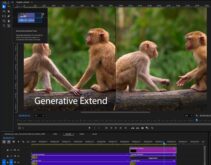At Streaming Media West in Los Angeles last fall, I met Highwinds VP of product management Chris Bray, and we got into a lengthy discussion about the future of RTMP and HTTP-based Dynamic Streaming. Unfortunately, I didn’t have my notebook, so didn’t get the most important points down. Fortunately, Chris was willing to fill me in on Highwinds’ move from RTMP to HTTP and discuss the future of HTTP delivery in general.
Streaming Media: Why has Highwinds decided to stop offering RTMP delivery and move on to HTTP? Has the switch already happened?
Bray: Yes. Technically this is already in effect—while we are still wrapping up the transition of some customers, we are no longer taking on new FMS customers.
Why?
We believe strongly that the future of CDN-based streaming video delivery is via cacheable, HTTP streaming protocols. Today we have multiple flavors of HTTP streaming protocols from multiple vendors, and we are supporting those from Adobe, Apple, and Microsoft, along with those that are proprietary to some of our customers, but the standardized DASH protocol and the eventual descendents of DASH will dominate in the long-run.
At Highwinds we have a philosophy of investing in the areas that will provide our customers with the most value, that they can then use to provide unique value to their own offerings. Highwinds is different from other CDNs in that our history (and present) is as a software engineering company in addition to being a network operator. That means that we always need to be innovating and investing where we can bring new value. If we aren’t bringing new value to our customers, then there is no need for us to be a CDN, as there are several companies already providing similar services. Most of the other CDNs in the market do not innovate in many areas—they are focused solely on fast-follower strategies and trying to operate as cheaply as possible at scale. Being able to control your underlying costs is a necessary element of a successful CDN, but these companies are not providing new capabilities to their customers.
Akamai is one company that does a good job of acting like an operator and innovating, and that’s why you see things like the HDNetwork coming from them. The Highwinds HTTP Streaming platform is directly comparable to the HDNetwork, and we are working on ways to surpass them this year in the HTTP Streaming area. There are a number of CDNs out there that have suitable FMS services, so if that’s what a customer still wants then their needs will be met by the market, but there isn’t much that we can add to that solution — it’s already fully mature, and there’s no room for us to help our customers add new value to their products.
What’s been the response from your customer base?
Most of our heavy FMS users have already moved onto our new HTTP Streaming platform, but there are a handful that are still making the transition. While this was more work for some than for others, in the end very few of our customers opted out of their FMS contracts. Most of them see the value in moving to HTTP Streaming, and have moved forward with us. The most popular benefit is that these customers are effectively now gaining the ability to natively stream to Apple iOS devices for free (they still have to pay for the bandwidth usage, but there is no premium).
What steps are necessary to transition over to HTTP?
Bray: For customers who are already using H.264/AAC/MP4, the only steps needed are the creation of SMIL metadata files (which many customers generate dynamically via their content management systems), and some small changes to their players. The player changes are not typically large as Adobe and Microsoft have done most of the work for you. HTTP Streaming is built-in to iOS, so there’s no work to be done there.
Given the inherent caching capability of HTTP over RTMP, is HTTP streaming reducing bandwidth costs when customers switch over?
Bray: Initially no, but in the long term it is absolutely the case that HTTP Streaming will reduce costs for our customers. Right now we are still working towards the critical mass needed to bring down prices on the platform, and need to keep tweaking the system to squeeze out cost. RTMP has better overhead characteristics relative to HTTP streaming, but that is far outweighed by the significantly higher efficiencies that we can extract on the server infrastructure side.
CDNs that are dependent on transit and don’t have the scale to be able to negotiate the best rates will not see as much of a benefit here as their own bandwidth costs will still be the most significant part of their costs. That’s one of the reasons that Highwinds has invested in building out our own network, and it continues to help us maintain some of the most aggressive costs in the industry.
If you look at where we are in the growth curve of IP-based video delivery, we are clearly still at the beginning. We’ve barely scratched the surface. The combined delivery capacity of all CDNs today would only be able to service a tiny fraction of the demand if all of the videos that are watched during prime time were delivered at HD bitrates to everyone who watches them on traditional broadcast today. We have a long way to go, and only a cacheable streaming technology will get us there.
How does HTTP work if the customer wants features like DRM or peer-to-peer?
The Adobe, Apple, and Microsoft protocols all support DRM for HTTP Streaming. DASH and future protocols will work with rights management schemes like UltraViolet or its successors.
You serve high-volume customers. Does it make sense for lower-volume users with their own servers, say on the Amazon cloud, to convert from RTMP to HTTP?
Absolutely. There is very little, if any, innovation happening around RTMP right now. Adobe has even invested in their own HTTP streaming protocol. I don’t think that’s simply because they wanted to have a new toy. They already had RTMP, and even RTMPT, which tunnels RTMP over HTTP, but they still built an HTTP streaming protocol.
One of the key benefits to what we are providing here is access to the technologies that have helped the biggest streaming companies grow to the size that they are. Netflix, for example, uses a flavor of HTTP streaming that is unique to them, but is still fundamentally HTTP streaming. In the past, cooking up your own protocols to do this was just too expensive of a proposition for smaller customers. What this platform represents is the best in streaming technology, now available to customers of all sizes.
 Streaming Learning Center Where Streaming Professionals Learn to Excel
Streaming Learning Center Where Streaming Professionals Learn to Excel








